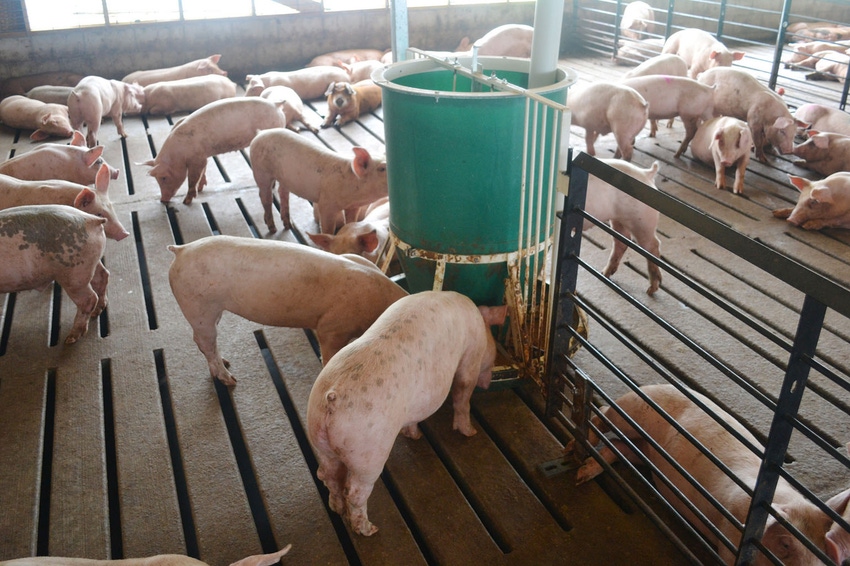Think small to maximize profit
Additives may stack up as a swine producer may still be paying for additives the pigs haven’t needed in months.
March 26, 2024

By Jorge Estrada, Carthage Veterinary Service
An excellent example is reviewing feed ingredients for your grow-finish phase — not just the bulk of it you may contract to purchase in the form of grain, distillers’ grains, and fat, but the minor ingredients in the diet, such as amino acids, vitamins, minerals, enzymes and medication. I sat down with two colleagues — Casey Neill, Carthage Veterinary Service nutritionist, and Kim King, Carthage System risk/merchandising manager — to review important considerations to keep in mind when doing this.
Feed is a significant expense in raising pigs, and Neill noted this makes it difficult for producers to consider changing their diet. This is, however, what also makes feed a logical expense to find cost savings that could add up across the herd. While you might immediately think to start with the around 89% of feed cost comprised of corn, soybeans, DDGs and fat, it’s worth digging into that other 11%.
It figures
At present, King calculated the average cost of feeding a pig from about 50 pounds out to finish is $66; this is after the $10-$15 to get the animal from weaning to feeder stage. Of that, $66, $7.29 — the 11% — is tied up in the aforementioned minor ingredients. Coincidentally, the current average cost range among different feed mills for common amino acids, including lysine, tryptophan, threonine, DL-methionine and valine, is also 11%. The price range difference for vitamins and minerals isn’t quite as high but may still be worth reviewing.
When the swine market is financially tight, it’s worth looking for every opportunity to save. This includes benchmarking your additives costs against other feed mills/suppliers. Break down your cost per pig as well as for the herd, and think about where you might be able to prioritize changes if you determine they are worth making. This includes evaluating not just the cost of these inputs, but your need for them. Neill noted additives may stack up on a swine producer — much like someone subscribing to new streaming services for favorite TV programs. After a while, the subscriber notices they’re spending money on some services they no longer watch; likewise, a producer may still be paying for additives the pigs haven’t needed in months.
In the same vein, it’s important to know how the various additives you want to use work in the animal and with one another. If you understand how to use enzymes, probiotics, therapeutic antibiotics and minerals to improve your animals’ feed conversion and average daily gain, for instance, you can better compare costs for what you decide to keep in their diet. Right now, efficient feed conversion is your pig's most important job, next to staying alive and well.
Competing considerations
For this reason, cost savings must be balanced against performance. If you are an independent producer trying to stay on budget, it’s easy to get caught up in cost alone and overlook product quality and biosecurity. For instance, there are products you may find cheaper because they are close to expiration, but how will that affect pig performance? Amino acids remain stable for a long time, but vitamins, minerals and enzymes tend to lose activity over time if they are not stored properly.
As Neill pointed out, more suppliers are typically good for price competition — but exercise basic biosecurity, including doing your homework about a product’s country of origin and if there have been reported issues for ingredients or safety. The supplier can even impact the particle size of feed additives, which can affect feed manufacturing and finally get it in front of the pig. While a domestically manufactured additive may carry a higher cost, it could be worth paying if the results justify the price tag.
While it’s not easy for a producer to balance competing interests of saving money against spending to earn a livable income, it’s worth noting these tighter times do offer valuable opportunities to take a few risks with your feeding strategy — and perhaps find a better mix of ingredients and input costs.
Carthage Veterinary Service relies on science and experience to provide unique and practical solutions to achieve the best outcomes for producers and their animals. Our teams work with producers and our production teams daily, and have a deep understanding of the challenges and intricacies of swine nutrition.
You May Also Like



